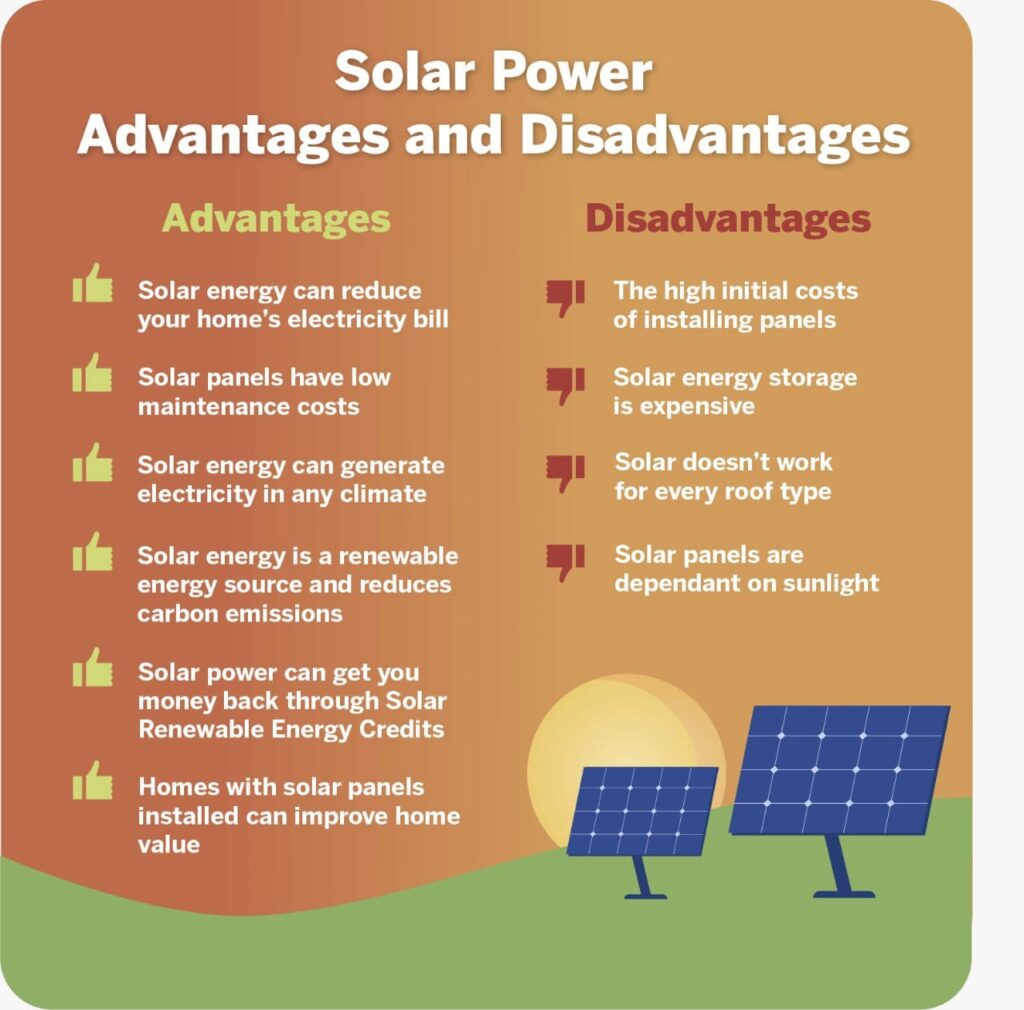What Are Two Drawbacks of Solar Energy?
Although the considerable advantages offered by solar power cause some advocates to ignore the comparatively minor flaws of this budding technology, these imperfections must be acknowledged so that their resolution is not halted. We must honestly analyze the disadvantages of the system and seek to refine solar power systems into a truly environmentally friendly alternative.
The most important complaints about solar power are:

Lack of consistency and reliability.
Solar systems rely on constant absorption of sunlight (particularly subatomic particles called photons), which can be easily deterred. The following factors limit the availability of sunlight:
Latitude.
Although solar power is an option almost anywhere on the planet at least to some extent, effectiveness decreases dramatically as distance from the equator increases. Residents of Vancouver, Canada, and St. Petersburg, Russia, for example, are at a significant solar disadvantage.
Clouds.
Clouds decrease the power of solar panels, especially in regions that are typically cloudy or foggy. According to the National Renewable Energy Laboratory, “[T]he solar resource during fog or low cloud conditions is about 10% of the value under clear sky conditions.” Solar panels in Denver, Colorado, would rarely be obscured by clouds, as that city experiences only 30 to 40 cloudy days per year. Hilo, Hawaii, despite its proximity to the equator, receives rain an average of 277 days per year, potentially making it a poor choice for solar power generation.
night.
The Earth itself is a fairly large obstacle, and acts every night to disrupt the flow of photons to the immobile, defenseless solar panels.
size.
To power an entire building, a large solar panel is required. It is unfortunate that photovoltaic technology is still in its infancy but, for now, we must build large panels to compensate for the inefficiencies of individual panels. A bulky mechanical steering system may also be needed to rotate the panels as they follow the sun across the sky. Batteries can also take up quite a bit of space.
Panel Deterioration.
Like anything else exposed to the sun, solar panels are gradually damaged by ultraviolet radiation. Rain, snow, dirt, temperature fluctuations, hail, and wind also pose serious dangers.
Cost.
The number of solar panels needed to capture energy for an entire home typically costs tens of thousands of dollars, making the electricity they produce cost substantially more than that provided by conventional energy sources. Solar advocates are quick to point to the considerable subsidies and tax credits from local and state governments, which essentially shift the financial burden to taxpayers. Another consideration is that the expansive battery banks needed for solar panels are typically not covered by the warranty on the panels themselves. They also do not last as long as the panels, and it can cost $100 or more for each battery to be replaced. However, solar panels are becoming more affordable and efficient as the technology develops, perhaps to the point where unsubsidized solar power is more affordable than conventional coal, gas, nuclear, or hydroelectric power sources.
Environmental pollutants.
Some of the most notorious substances contained in panels and associated equipment include: Toxic batteries are necessary for solar panels
Cadmium.
When sealed inside solar panels, cadmium is harmless. If it leaks from the panel, cadmium can cause serious environmental damage. Panels must be disposed of with extreme care to prevent this carcinogenic substance from leaching into soil and water.
Lead.
Batteries, specifically deep-cycle lead-acid batteries, are necessary for solar panels to ensure a steady supply of electricity. They contain lead and sulfuric acid, which are highly toxic, especially to sea creatures. Lead has been found to cause a number of disabilities in children, including developmental disabilities. However, most of the material from spent batteries can be recovered if they are recycled, provided consumers make the effort.
Roof considerations.
Solar panels are often installed on the roofs of buildings to take advantage of the large, empty, sunny space. As a consequence, repairs to the underlying roof become quite complicated and often require removal of the solar installation before even routine roof maintenance can be performed. It is good practice to perform necessary roof work prior to the initial installation of a solar system to avoid future headaches.
Appearance.
Like it or not, solar panels speak for themselves and neighbors and passersby will take notice of them. Many homeowners are understandably reluctant to install a large solar panel on an otherwise attractive shingled roof. This problem is being addressed by the development of photovoltaic shingles, windows, and other technologies that blend more seamlessly with existing roof surfaces.
In summary, residential solar energy has some aesthetic, economic and technical drawbacks, but many of them can be overcome with responsible planning and maintenance.
Related Articles You May Interested in:
24 Hour Emergency Roof Leak Repair Near Me
How Do I Get My Roof Replaced For Free?
Do Property Management Companies Pay Up Front for Roof Replacement
